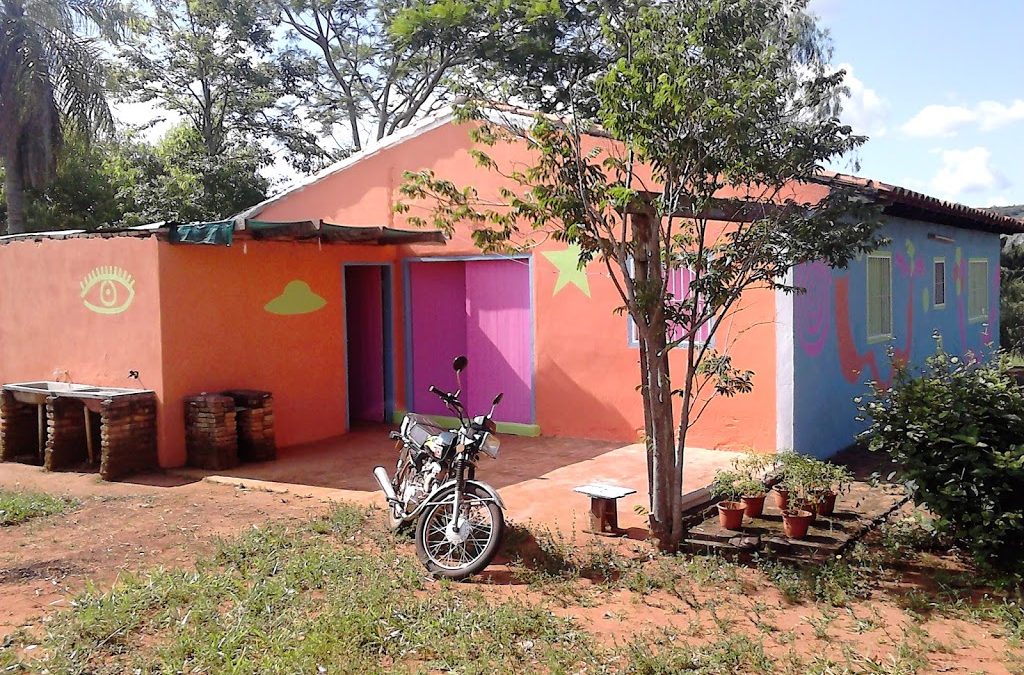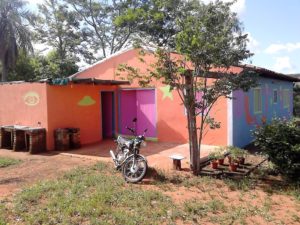Once I had done the teaching of English in Paraguay, returned to England and then decided I could make a life for myself in Paraguay the next thing I needed was somewhere to live. You cannot spend you whole life in other peoples spare rooms.
Having spend 18 months living outside Piribebuy teaching English it made sense to find somewhere in the area that I had got to know and amongst people who had become friends.
After many local enquiries it became clear that the best option was that of buying land and then having the house I wanted built upon it.
To this end I discovered that a small sugar cane plantation no more than half a mile from the English school was bringing it’s owner nothing but losses and that as such he was keen to sell. The plot of land was rather more than I wanted but the price was very affordable. I will leave for another day how the excess land was eventualy dealt with.
The main draw of the plot was not its size but the view it offered. The land decended slowly to the dirt track and then beyond that rose in the form of steep vegetation covered cliffs that form a screen stretching from horizon to horizon. A view I still see every morning and never tire of.
And so it was that I became the owner of eight and a half hectares of Paraguayan countryside upon which grew several hectares of unprofitable sugar cane. I could have made a little money selling the sugar cane but it was far more useful as something to let workers slowly clear away as a bonus.
Without having to trouble officials for anything like planning permission I took a walk one afternoon and simply planted a stick from where the view would be best to show where the house would be built. Then with the builder the dimensions were discussed and a rough plan drawn up to show how the house would look internally.
Once that had been done a team of builders was assembled. All local men who were known to each other. There was no need to seek out professional workers from far away.
The building materials were also locally sourced. The bricks arrived by oxcart from a private brick works no more than a mile away, almost all the timbers came from a forest only a few miles further distant and although I did have to travel to a local town for the roof tiles they were made from local materials and purchased directly from the factory.
Almost everything else the cement, the cables, the floor tiles and the fixtures and fittings arrived via the local buses from nearby hardware stores.
Once everything was collected together the work could begin. First the box of bricks that formed the inner and outer walls and then once they were up to height the roof beams.
The walls thanks to having team of builders rose a noticable distance each day ane it was a relief once they were high enough to take the roof beams as once they were up the roof tiles could be added and the worst of the weather kept out of the house.
The building then continued at a comfortable pace and soon enough the walls was plastered inside and out and the floor tiles laid.
It was only at this point with just the last few touches like doors and windows left to be added that work all but ground to a halt. I suspect it was realised that once these few this were finished off there would be no more days work to be had.
So it took a while for these things to be done and even longer if I was not hanging around watching. However in the end the house was finally finished although it was a few more months before the external kitchen to be compleated, so for a while the stove sat out in the garden.
Once all the building work was out of the way I was left with the house I have today and could give it a good coat of paint inside and out to make it more homely.
Afterwards there was then furniture to add to turn the box into a house and then later on possessions to bring over from England to add my identity and personality to the house.
The exterior has had further coats of paint since then, each one brighter than the last and once the last of the sugar cane had gone from near the house I set about surrounding it with a garden and planting trees where there had once just been a sea of grass.
All this is in place now but it is of course a never ending job, especially in the garden, to keep things how they should be.



Recent Comments